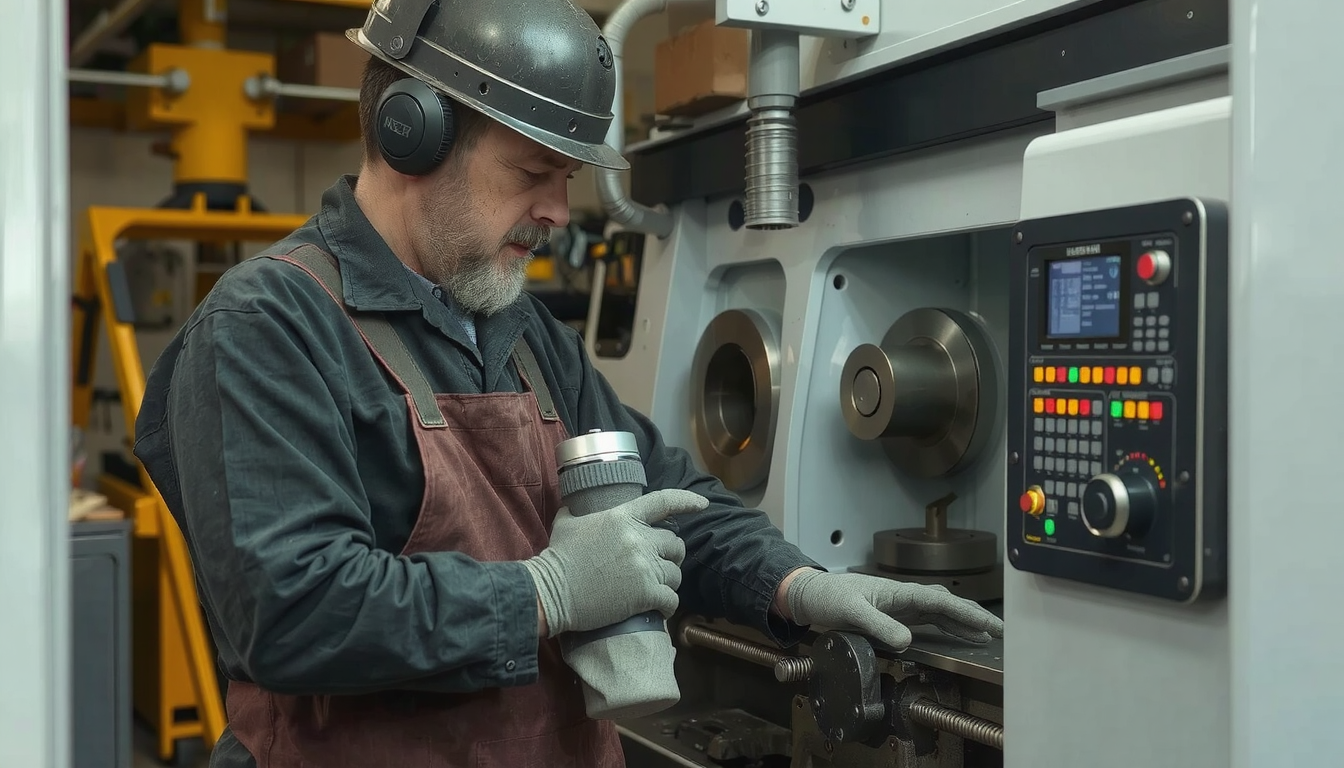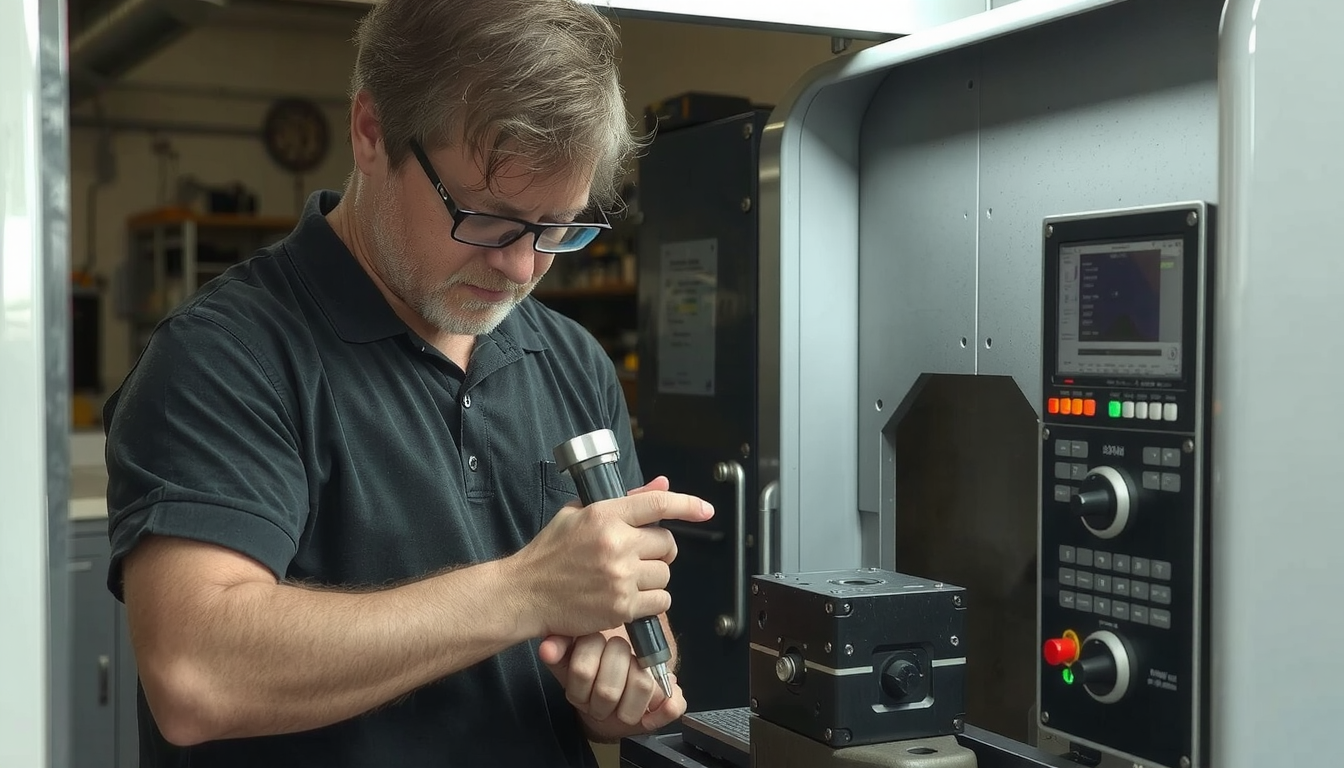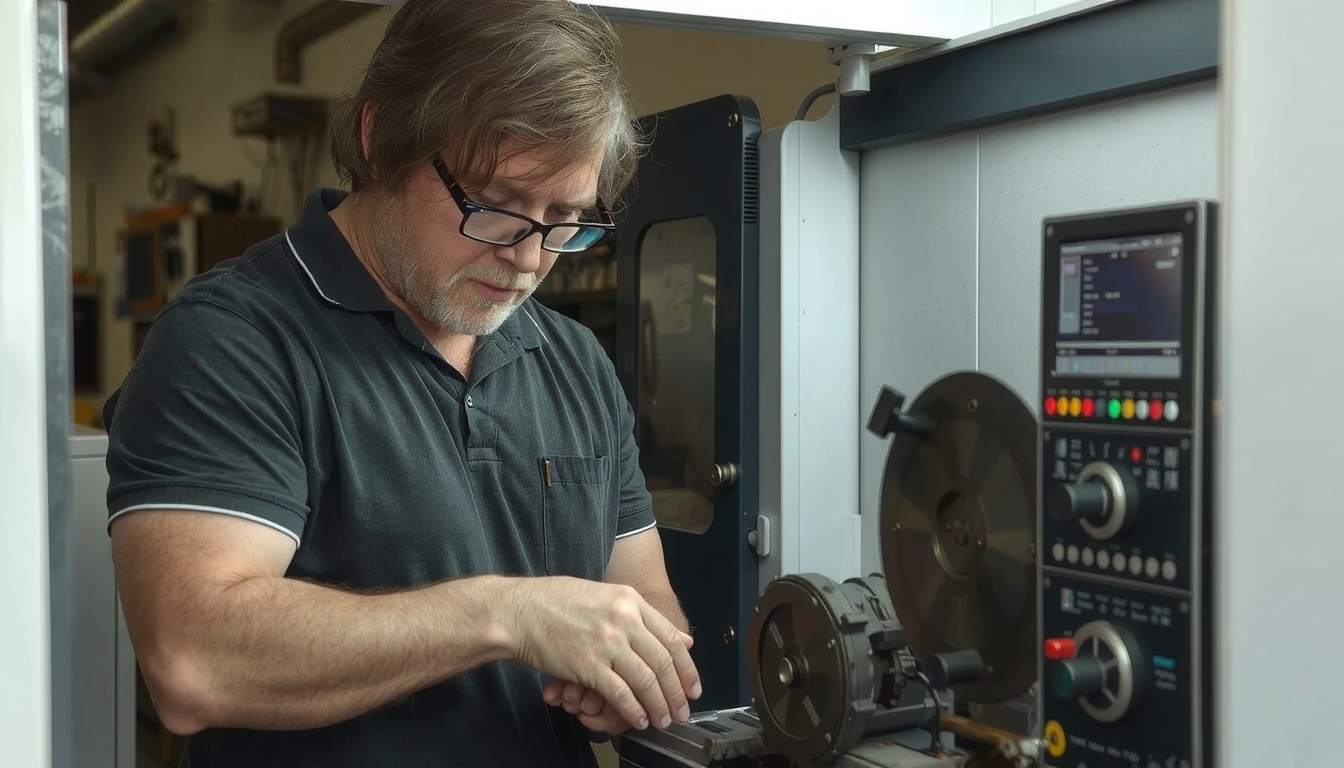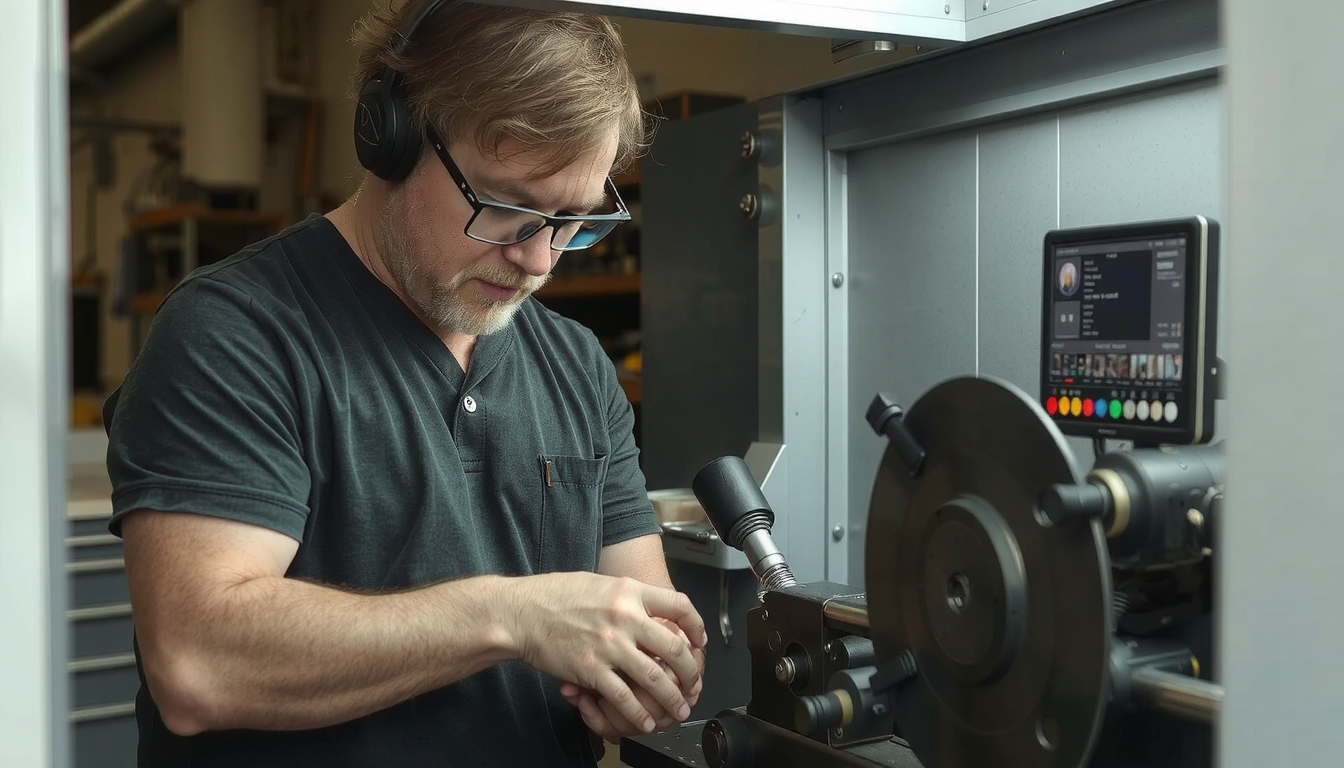Getting a CNC lathe is a simple process. Learning to work a CNC lathe is a clear process. You have organized steps. You start with a CAD design. You end with a machined part, either a metal or plastic one. In this process, you will use design (CAD), programming (CAM), machine setup, and run it safely.

To use a manual lathe, you have to turn each knob. A CNC lathe is not that way. A CNC lathe is an automatic machine. It can produce parts with high precision by repeating the same process many times.
This guide is everything you need to know. You will learn the machine’s safety and basic functions. You will learn a full workflow for your first project. We will also give you tips from experts.
Health Comes First: Rules of Safe Operation
A CNC lathe is a tool of great power. It spins heavy materials at high speeds. But, safety should always come first. This is the only way to prevent injuries and machine damage. CNC lathe safety needs your full attention. You need to respect the rules every time.
Here is a safety rules checklist. These are essential best practices for safe operation that all machinists follow.
- Personal Protective Equipment (PPE): Wear safety glasses at all times. Never wear loose clothes, gloves, rings, necklaces, or anything like that. Long hair should be tied up.
- Machine Guards: During operation, all safety doors must be shut and locked. Never disable or bypass safety features.
- Emergency Stop: Find the huge red Emergency Stop (E-stop) button first. Be ready to press it at any time.
- Never Leave Unattended: Don’t walk away from the machine while the program is running. This is especially important in a new setup.
- Proper Setup: Always make sure to securely clamp your workpiece and cutting tools. Do this before you turn on the spindle. A loose part can be very dangerous.
Getting to Know Your CNC Lathe
To know how to operate a CNC lathe, you must grasp its main components. These components each have their specific function. Combined, they do everything to yield the desired result.
Knowing the parts better also makes you identify the machine’s movements. You will be able to understand what a program instructs the machine to do.
| Part | Function |
|---|---|
| Headstock | Houses the main motor and the spindle. It is the one providing the power for the part to spin. |
| Spindle/Chuck | The rotating part of the machine. The chuck, which is located on it, holds the material. |
| Tailstock | Prevents a long workpiece from bending by supporting the other end. It slides on the bed. |
| Turret | A round disk that holds all your cutting tools. The machine is able to change tools automatically. |
| Bed | A solid part, which is the lifeline of the lathe. Other parts are mounted on it. This is how alignment is kept. |
| Control Panel | It is the brain of the machine. You can load programs, set tools, and control movements here. |
Two main axes are what the machine moves on. One is the Z-axis and the other is the X-axis. The Z-axis is the one linked to the part’s length, while the X-axis is associated with the part’s diameter. All cuts result from a combination of both of these movements.

Your First Project in a Step-by-Step Way
The greatest form of learning the operation of a CNC lathe is walking through an exercise. Let’s get down to the making of a simple part. We will make an aluminum pin that is 40mm long and has a diameter of 20mm. This example will help you to convert theoretical concepts into practical actions.
Step 1: Design & Program (CAD/CAM)
Initially, you should have a plan. The basic CNC workflow always kicks off with a digital design.
You design your part using CAD (Computer-Aided Design) software. Our pin is just a simple cylinder shape and thus it is a simple drawing.
Further, you will use CAM (Computer-Aided Manufacturing) software. The CAM program takes your CAD model and creates the toolpaths. These are the exact paths that the cutting tools will follow. The software will then change these toolpaths into G-code. This is the language that the CNC machine understands.
Some of the experts for simple parts write G-code by hand. But with beginners, the best way to go is CAM. If you wish to go further with the code, learning about G-code itself would be a good hit. A great next step to study would be CNC lathe programming.
Step 2: Machine Preparation & Setup
It is time to make the machine ready. First, you have to power on the main breaker. Then, turn on the control panel.
The first thing to do is “home” the machine. This is called “Machine Zero Return.” This will move the turret to a known reference position. The machine then knows the position of its workspace relative to its home location. This step is very critical. You must do it every time you power on the machine.
Now, prepare your piece of material. In our case, a round bar made of aluminum will be used. Open the chuck jaws. Insert the bar. The end should protrude by approx 40mm. Use the chuck key or the foot pedal to clamp it down very tightly.

Step 3: Tooling and Offsets
To operate correctly, your tools need to be set up properly. For pins like ours, we need to get at least two tools. A roughing tool will cut away the excess material, and a nice finishing tool will make a smooth final touch. Securely mount these tools in the turret.
This is the most important part in order to set properly. You should set the tool offsets. You should tell the CNC the exact size and place of every tool. This is a process called, most of the times, “touching off.”
What you have to do is jog a tool carefully, so it just touches the workpiece that is rotating. Then, this position is saved into the control’s offset page. You do the same for all the tools you plan to use. Most modern CNC lathes can achieve ±0.0001inch (0.0025mm) tolerances. Tool offsets set correctly are crucial to achieving this level of precision.
Step 4: Setting Work Zero (G54)
The machine is aware of where its home is, but not of where your material is. A “work zero” point needs to be set. This will act as a starting point for your program on the actual piece.
For the majority of lathe work, the Z-axis zero (Z0) is the face of the part. You will take one of your tools to make a light cut across the face of the aluminum bar. After that, you will inform the control that the position you have determined is Z0. The work offset value is then entered and usually, it is G54.
Step 5: Load, Simulate, and Run
After setup is completed, you can load the G-code program. The usual way of doing this is by USB drive or via a network.
Before the metal is cut, you must run a simulation. You can do this by using the control’s “Graphics” mode. This will give you a visual representation of the cut. This is your best opportunity to detect major programming errors that may cause a crash.
You are all set to begin making your first part. Close the safety door. Turn the “rapid override” dial down to 25% or less. This is going to slow all the fast movements down.

Press the “Cycle Start” button. Keep your hand near the “Feed Hold” button or the E-stop button. Always, look at the “distance to go” screen on the control. This will show you where the tool is moving. After you feel comfortable that the first moves are safe, you can slowly increase the rapid override reset it back to 100%.
Let the program finish and before that, open the door and remove your part. Use calipers to measure it accurately. If the diameter is 20.1mm (instead of 20.0mm), you can adjust the tool offset by that specific amount. This will lead to a perfect part at the next program run. This is the whole process – learning how to operate a CNC lathe. You first setup, then check, finally refine.
7 Most Common Mistakes of Beginners and Ways to Avoid Them
Becoming an expert begins from being a beginner, as everybody has made mistakes. Here are seven error types. And here is how you can learn the mistakes while using a cnc lathe.
- Tool Offsets Incorrectly Set: This is the number one reason for crashing. A small error in writing can lead a tool to collide with the full-speed chuck. Pro Tip: After setting a tool, move it to a known position in the air (like X200. Z200.) Check that the machine’s position display matches what you expect.
- Workholding Pressure Wrong: Not enough pressure makes the spinning piece fly out while too much pressure causes a thin or hollow part to crush. Pro Tip: Start with standard pressure settings. Check the part for any marks or distortion.
- Forgetting to Set Work Zero (G54): A program running without a set zero point will have cuts in the wrong place or it will go into the air.
- Trusting the Simulation Too Much: A simulation is a very good tool but it will not know if your actual tool is not tight. It will not know if your part is held securely. Always be cautious on the first run.
- Dull Tools in Use: A dull tool not only creates a bad surface finish but also makes parts that are not right. In extreme cases, a dull tool can even break. Pro Tip: If you hear a loud screeching or see a rough finish, check the cutting insert first. Change it.
- Rapid Move Into the Part: A G00 command is a rapid move. It is meant for moving through open air. A G01 is a feed move. It is meant for cutting. Mixing these up in the code is the root of the problem. This leads to the breaking of tools.
- Incorrect Speeds and Feeds: Each material and tool have their specific cutting speed (RPM) and feed rates. Using the wrong settings can lead to the breakage of tools too or the production of a low-quality part. Pro Tip: Use conservative figures as recommended by the tool manufacturer for the first attempt. You can adjust those figures later on.
When to DIY vs Using Professional Services
Having and running a CNC lathe is a big deal. Getting the right equipment, space, and time only scratch the surface. The learning curve is steep, and upkeep is constant. A small machine can be a good tool for projects or learning but if the task is beyond that, the choice is clear.
However, where there are complicated parts, high would-be production, and projects needed on time, the perfect solution is often outsourcing.
Going to a professional shop means being able to use advanced equipment. Here, you also find machine gurus who can optimize the machines for you. When your projects require such efficiency and precision, exploring professional CNC lathe services can be the most effective and cost-efficient way.
Conclusion: Your Path to Expertise
You are now the owner of a CNC lathe. The main process is the same every time. Safety, Setup, Simulate, and Supervise. Mastering a skill is not achieved in a day, it requires persistent practice. Start small, and manageable projects.
Seek more knowledge. Ask questions. Experiment but keep the risks low. At Mekalite we are leaders in manufacturing solutions and we are dedicated to sharing our knowledge so that we can move the industry forward.
FAQ: Your CNC Lathe Questions Answered
What is the difference between a CNC lathe and a CNC mill?
A CNC lathe will produce round or cylindrical parts. It will be spinning the workpiece while the tool is holding still thus it is cutting the material. A CNC mill will make more complicated shapes. It will spin the cutting tool to remove the material from a fixed workpiece.
What is G-code? Do I need to learn it to use a CNC lathe?
G-code is the programming language that tells a CNC machine how to move. Modern CAM software writes the G-code for you. However, learning the basics is very helpful. This includes G00 for rapid moves and G01 for cutting moves. This helps with troubleshooting and making small edits at the machine.
How much does a beginner CNC lathe cost?
Prices vary considerably. Small, benchtop CNC lathes for hobbyists can cost a few thousand dollars. Entry-level industrial machines often start in the $20,000 to $50,000 range. The price increases with size, brand, and features.
What materials can you use on a CNC lathe?
CNC lathes can machine a wide variety of materials. This includes metals like aluminum, steel, brass, and titanium. It also includes plastics like Delrin, nylon, and PEEK. The key is using the right cutting tools. You also need the correct speeds and feeds for each specific material.
How long does it take to learn how to use a CNC lathe?
You can learn the basic steps of operation in a few days with hands-on practice. However, becoming a skilled machinist takes longer. You need to handle complex setups, optimize programs, and solve problems effectively.

